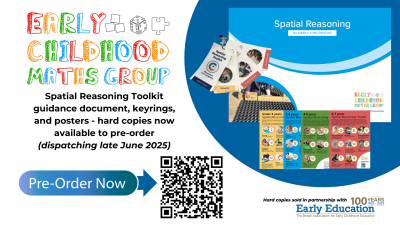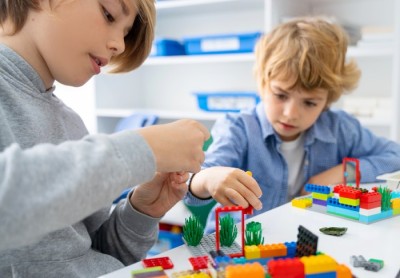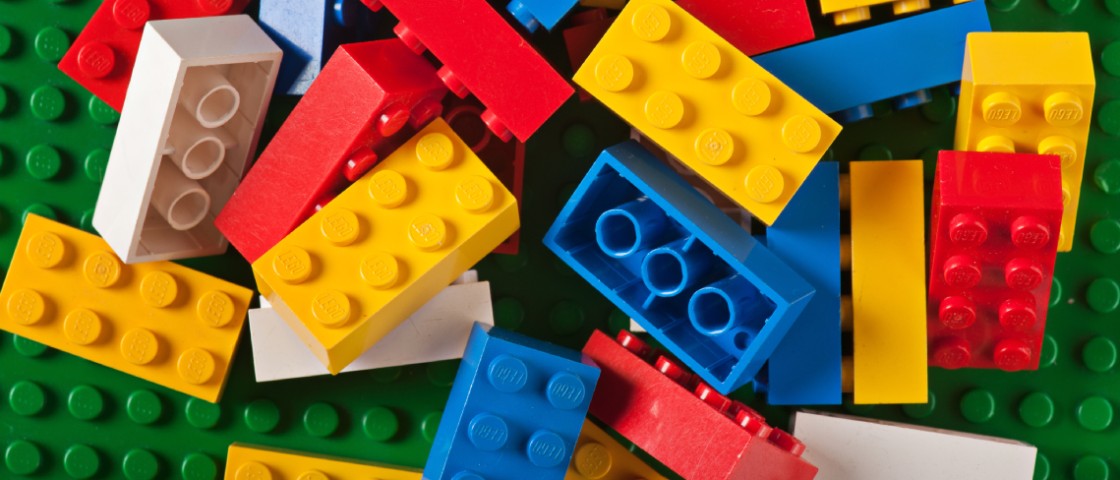
Spatial reasoning resources
Here you will find links to resources that will help you implement spatial reasoning in your setting or classroom.
Spatial Reasoning Toolkit
The Spatial Reasoning Toolkit was created in collaboration with the Early Childhood Maths Group, and part funded by the ESRC Impact Acceleration Account. We summarise recent international research into the development of spatial reasoning from birth to seven years of age and have developed this into a trajectory of early learning experiences.
To cite the Spatial Reasoning Toolkit: Gifford, S., Gripton, C., Williams, H., Lancaster, A., Bates, K. E., Williams, A. Y., Gilligan-Lee, K. Borthwick, A., Farran, E. K. (2022). Spatial Reasoning Toolkit. https://doi.org/10.31234/osf.io/jnwpu
Resources available in the Spatial Reasoning Toolkit include:
- A research summary
- A trajectory of spatial reasoning development
- Posters: trajectories
- Posters for different age groups
- Keyrings
- Videos
- Children's book lists.
The Spatial Reasoning Toolkit aims to clarify the mathematics in early spatial experiences, suggesting what to emphasise in order to support the development of children’s spatial reasoning in sensitive, appropriate and playful ways.
In its first year since its launch in February 2022, the Spatial Reasoning Toolkit content reached a wide audience:
- 2,109 videos
- 498 posters
- 34,879 online views of the toolkit
- 4,091 research summary and development trajectory
- 492 book ideas
- 5,481 presentation attendees
- Articles shared with 260,124 contacts
- 3,313 engagements on Twitter
- 113,794 Twitter impressions
Spatial Reasoning Toolkit guidance document, keyrings, and posters - hard copies now available to pre-order

Early Education are selling hard copies of elements of the Spatial Reasoning Toolkit in partnership with the Early Childhood Maths Group (of which Emily Farran is a member).
Spatial Reasoning Toolkit resources are freely available in digital form via the links above.
Pre-order hard copies: https://early-education.org.uk/product-category/resources-and-publications/srt/
Spatial reasoning prompt cards

Developed as part of the SPAtial Cognition to Enhance mathematical learning (SPACE) programme funded by the Education Endowment Foundation, the spatial reasoning prompt cards (PDF) suggest ways to spatialise the mathematics curriculum and ways to support children in their spatial reasoning during Lego building activities. The SPACE resources are organised according to six spatial skills that can be fostered in the classroom: visualisation, visual and spatial memory, composing and decomposing, spatial scaling, perspective taking and spatial representation. The Year 2 mathematics and spatial reasoning document provides examples of how these six spatial skills can be used in the Year 2 classroom.
Lego activity ideas

Developed as part of the Block Construction for Mathematics (BLOCs) project, funded by The Leverhulme Trust, the Lego activity ideas document explains the links between spatial skills, Lego and maths and how to encourage the development of these spatial skills during Lego play.
Evidence-based trajectory of spatial reasoning development

This trajectory of spatial reasoning development for 7- to 11-year-olds complements the trajectory of spatial reasoning development for birth to seven years developed by the Early Childhood Maths Group (see ECMG Spatial Reasoning Toolkit). These two trajectories are informed by extensive review of research in this area and together offer activities for children from birth to 11 years. This trajectory is presented in four sections, covering space (spatial relations) and shape (objects and properties) for 7- to 9-year-olds and 9- to 11-year-olds. Three columns identify the areas of spatial reasoning, the progression in children’s learning and developmentally appropriate activities. Each child develops in their own unique way: age bands are approximate and dependent on previous experience, so should be used as a guide rather than age-related expectations. Spatial reasoning is wider than traditional geometry, including aspects of space and shape such as position and direction, navigation, perspective-taking, scaling, transformations, shape properties and structure, composition and decomposition; the document could be used to substitute a geometry curriculum, with activities integrated throughout the curriculum.
This document forms part of a series of Royal Society publications on spatial reasoning which can be found at: Royal Society Curriculum and Assessment and accompanies our earlier work on the ECMG Spatial Reasoning Toolkit.
The series includes:
• RS ACME Primary and early years expert panel perspective: Spatial reasoning - June 2024 (royalsociety.org)
• Progression of Spatial Reasoning across age bands (Appendix 1 of document listed above)
• This document, An evidence-based trajectory of spatial reasoning development for 7- to 11-year-olds.
• Whole-school approach case studies: Supporting Primary Children’s Spatial Reasoning in Geography and Design & Technology
Download the trajectory of Spatial Reasoning development (PDF)
Acknowledgements: This document was written by Dr Sue Gifford1, Prof. Emily Farran2 and Dr Alison Borthwick1 with contributions from the Joint Primary ATM/MA group, Clare Christie (mathematics lead teacher) and Remke Klapwijk (Delft University of Technology).
1Royal Society ACME Primary and Early Years Expert Panel
2University of Surrey, UK
To cite this document: Gifford, S., Farran, E.K., Borthwick, A. (2024). An evidenced-based trajectory of spatial reasoning development for 7- to 11-year-olds. https://doi.org/10.31234/osf.io/394nk_v1
Spatial reasoning practitioner videos
See also: spatial reasoning videos as part of the Spatial Reasoning Toolkit
Developed as part of the SPAtial Cognition to Enhance mathematical learning (SPACE) programme funded by the Education Endowment Foundation, the Spatial Reasoning videos discuss the research evidence for the importance of spatial reasoning for mathematics, and introduce three spatial skills that you can use and encourage children to use: visualisation, spatial representation and spatial language.




